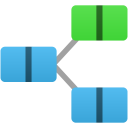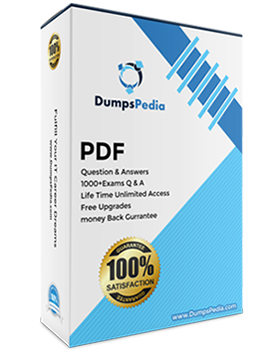
SOA Design & Architecture Lab with Services & Microservices Practice Questions
The most impressive hallmark of Dumpspedia’s S90.08B dumps practice exam questions answers is that they have been prepared by the SOA industry experts who have deep exposure of the actual Certified SOA Architect exam requirements. Our experts are also familiar with the SOA Design & Architecture Lab with Services & Microservices exam takers’ requirements.
S90.08B SOA Exam Dumps
Once you complete the basic preparation for SOA Design & Architecture Lab with Services & Microservices exam, you need to revise the SOA syllabus and make sure that you are able to answer real S90.08B exam questions. For that purpose, We offers you a series of Certified SOA Architect practice tests that are devised on the pattern of the real exam.
Free of Charge Regular Updates
Once you make a purchase, you receive regular SOA Design & Architecture Lab with Services & Microservices updates from the company on your upcoming exam. It is to keep you informed on the changes in SOA S90.08B dumps, exam format and policy (if any) as well in time.
100% Money Back Guarantee of Success
The excellent S90.08B study material guarantees you a brilliant success in SOA exam in first attempt. Our money back guarantee is the best evidence of its confidence on the effectiveness of its SOA Design & Architecture Lab with Services & Microservices practice exam dumps.
24/7 Customer Care
The efficient SOA online team is always ready to guide you and answer your Certified SOA Architect related queries promptly.
Free S90.08B Demo
Our S90.08B practice questions comes with a free SOA Design & Architecture Lab with Services & Microservices demo. You can download it on your PC to compare the quality of other SOA product with any other available Certified SOA Architect source with you.
Related Certification Exams
S90.08B PDF vs Testing Engine










10
Customers Passed
SOA S90.08B
90%
Average Score In Real
Exam At Testing Centre
87%
Questions came word by
word from this dump
SOA Design & Architecture Lab with Services & Microservices Questions and Answers

Service Consumer A sends a message to Service A. There are currently three duplicate implementations of Service A (Implementation 1, Implementation 2 and Implementation 3). The message sent by Service Consumer A is intercepted by Service Agent A (1), which determines at runtime which implementation of Service A to forward the message to. All three implementations of Service A reside on the same physical server.
You are told that despite the fact that duplicate implementations of Service A exist, performance is still poor at times. You are also informed that a new service capability will soon need to be added to Service A to introduce functionality that will require access to a shared database being used by many other clients and applications in the IT enterprise. This is expected to add further performance demands on Service A.
How can this service architecture be changed to improve performance in preparation for the addition of the new service capability?

Service A is a task service that is required to carry out a series of updates to a set of databases in order to complete a task. To perform the database updates. Service A must interact with three other services that each provides standardized data access capabilities.
Service A sends its first update request message to Service B (1), which then responds with a message containing either a success or failure code (2). Service A then sends its second update request message to Service C (3), which also responds with a message containing either a success or failure code (4). Finally, Service A sends a request message to Service D (5), which responds with its own message containing either a success or failure code (6).
Services B, C and D are agnostic services that are reused and shared by multiple service consumers. This has caused unacceptable performance degradation for the service consumers of Service A as it is taking too long to complete its overall task. You've been asked to enhance the service composition architecture so that Service A provides consistent and predictable runtime performance. You are furthermore notified that a new type of data will be introduced to all three databases. It is important that this data is exchanged in a standardized manner so that the data model used for the data in inter-service messages is the same.
What steps can be taken to fulfill these requirements?

Service A is a SOAP-based Web service with a functional context dedicated to invoice-related processing. Service B is a REST-based utility service that provides generic data access to a database.
In this service composition architecture, Service Consumer A sends a SOAP message containing an invoice XML document to Service A (1). Service A then sends the invoice XML document to Service B (2), which then writes the invoice document to a database (3).
The data model used by Service Consumer A to represent the invoice document is based on XML Schema A. The service contract of Service A is designed to accept invoice documents based on XML Schema B. The service contract for Service B is designed to accept invoice documents based on XML Schema A. The database to which Service B needs to write the invoice record only accepts entire business documents in a proprietary Comma Separated Value (CSV) format.
Due to the incompatibility of the XML schemas used by the services, the sending of the invoice document from Service Consumer A through to Service B cannot be accomplished using the services as they currently exist. Assuming that the Contract Centralization pattern is being applied and that the Logic Centralization pattern is not being applied, what steps can be taken to enable the sending of the invoice document from Service Consumer A to the database without adding logic that will increase the runtime performance requirements?




